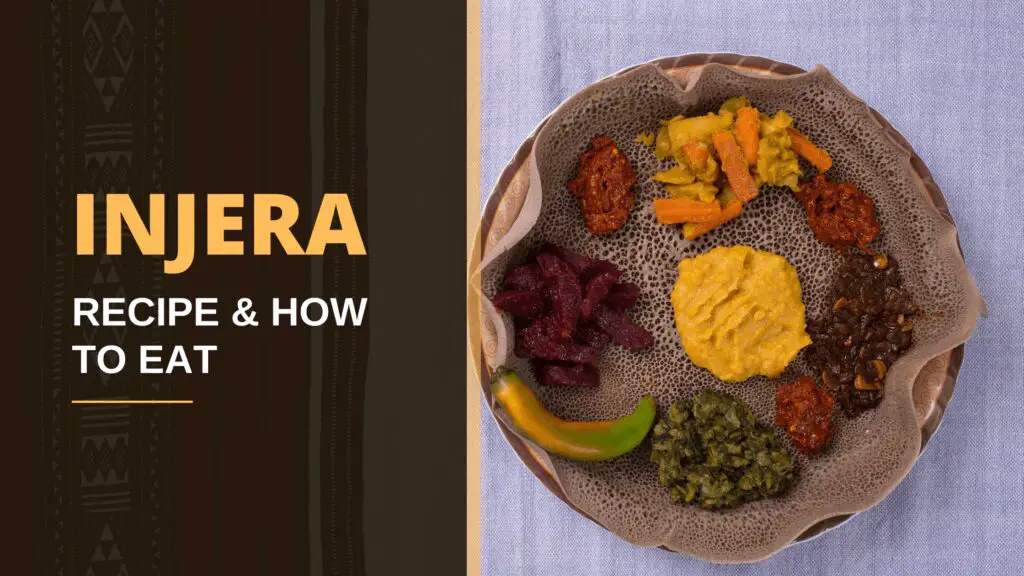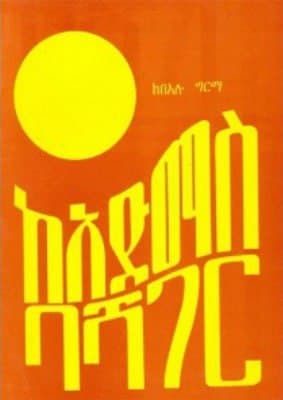For most people living in Ethiopia or Ethiopian diasporas themselves, Injera serves as a big deal, not just because Injera is one of the most ancient traditional food of the country but also a means of identity and fulfillment and belonging for the Ethiopian people. That’s why even for Ethiopian people living in foreign countries, this food still finds a way to win them over the other western cultures.

“We can’t say we eat food without Injera,” said Kassahun Gebrehana to the mail and guardian. Although teff (the prominent constituent of Injera) is widely existent in Ethiopia, we can also say it’s possible to find teff in other countries such as Eritrea, Australia, China, India, South Africa, and the US.
Ethiopia grows more than 90% of the world’s teff, and around 6 million Ethiopian small farmers are a significant part of this process. Even if Injera gained international recognition in 2003 by a Dutch agronomist when about 1440kg teff seed was sent to Netherland, its cultivation in Ethiopia lasted for around 4000 years. Besides its abundance in the country, teff is pretty drought resistant and productive quickly. Unlike all of this, teff can’t tolerate frost.

Injera Recipe
What are the main constituents of Injera?
- Teff flour
- Yeast either commercial or wild
- Water
Step 1 – Purchasing, Filtering & Grinding
Purchasing
In Ethiopian culture, women mostly execute this chore. First, they have to buy teff or get it from the farm. But in the urban parts of the country, teff (the main constituent of Injera) is bought from what they initially call (Wefcho bet). Wefcho bet is where potential owners bring teff from either farm or teff distributors to sell and profit from the close-by society. This place is a place of multitasking. Not only do they sell and distribute teff and filter and grind teff and many more traditional food constituents. As an Ethiopian woman who grows up watching my mother do the same routine, it’s pretty apparent thus that Ethiopian women are the expert for this task.

Teff has different varieties ranging from white/ivory, red, and dark brown. The white seed types of teff are widely preferable for their lighter color and the assumption of their economic class. So whoever is buying teff they first and foremost need to pick and choose upon their interest, later on, the negotiation phase will proceed. Almost entirely, every woman and mother in Ethiopia like to negotiate about every purchase they make. This is often because of the financial baggage they have on their shoulder, and this usually upgrades their marketability wisdom.
Filtering & Grinding
After purchasing teff for the lowest price possible, the next step would be filtering the teff from scrubs and small particles. Most of them do it themselves, and others hire someone from the “wefcho bet”. Afterward, the grinding phase usually begins. This is done by a big grinding machine which is only present in such places. This phase must be monitored well cause the teff flour could get mixed up with other flour, which automatically leads to quality and taste reduction. Also, since the fee of teff is comparably high, it will lead to bankruptcy. Lastly, the phase most women have in the “wefcho bet” will end after most of the proceeding steps are held at home.

Step 2 – Measuring, Mixing & Yeasting
So the grinded flour will be carried to their residence and re-pass the filtering step all over again. This is done in the case of the possibility of getting mixed up with unnecessary particles during grinding and transportation. By now, they should prepare a large sack to store all of the flour in a room with a room-temperature and dry place. They usually prepare a cylindrical barrel to keep it.
The following steps are pretty routine. They set a date to bake Injera depending upon their family members and the surrounding temperature. Since Injera is a sour fermentation product, it is more likely to mildew briefly and at a boiling temperature. So if they have a small number of family members, they prefer to make a small amount of Injera. And even if they have a big family, if the weather is considered warm, they are advised to bake Injera more frequently than having a large amount of it.
So this is often calculated by the lady of the house or the older daughter. As you can imagine, every household recipe schedule does differ based on the above criteria.
Measuring, Mixing & Yeasting – How to Make Injera
My mother taught me how to make Injera and it is done like this;
- You traditionally measure the amount of flour you need for 3-5 days.
- You need to have either a commercial yield or a wild yield for the traditional method. It is preferable to have the wild yeast. Because it gives a deeper taste and color for the Injera and also its considered to have an aerobic reaction.
- Now place it in a bucket which doesn’t leak, add some water above it and mix it gently. Make sure that you entirely mix the water with the flour.
- Lastly, you should cover the bucket with either a fabric or plastic to keep the inside fermentation warm and undisturbed.
- This should last a minimum of 4 days and maximum of 5 days. Remember, the longer you wait the deeper the taste will be. Note; (the day you open it, it might look and smell a bit sniffing but it’s a normal phase of the fermentation).
- The upper mold of the mixture need to be discarded. So you gently clear the circled edges of the bucket and pour out the entire mold out (in the process you will encounter the clear mix of the mixture you don’t need to pour that out).
- Now you need to prepare a clean casserole with water (the amount of water depends on your former mixture).
- Boil the water and put 1 or 2 cup of the mixture in the boiling water to make what is called “Absit”.
- The Absit making phase requires a complete focus and consistent paddling. Otherwise, it might last with little hard circling of the mixture (consider it as making cream for a cake).
- Absit don’t really need much of a time. The moment you realize its viscosity getting high is the moment where you should know that the task is done.
- Place it on the ground to cool down. You may open the casserole and shed some water over it.
- After a few minutes of cooling, you are allowed to mix the Absit with the mixture almost entirely, Wait a couple of hours until the mix and Absit ferments it all over again.
Step 3 – Preparation & Baking
The third and final phase is baking which involves heating either the traditional clay plate or the electric stove, and both of them have circular shapes.
- Add some water to make the final mix more consistent.
- Prepare a smaller bottle to pour a little mix for the first Injera.
- You need to pour the mix on the warm plate circularly first you need to finish the first circle and then continue for the smaller one but you can’t stop each pouring needs to be consistent until one whole Injera is made. Note; (before you finish circling you will see little porous coming out of the mix which indicates the heating of the stove).
- You can’t wait too long you have to shut down the hood of the stove.
- Not after long you will notice steam coming out of the stove this indicates the readiness of the Injera.


Our mothers invented this fabulous and slim woven material out of grass called “Sefede” which helps to take out the warm Injera from the oven and carefully lay it on a similar grass is woven fabric called “Mesobe” or “Enkeb.” This process continues until the entire mix is made into Injera and the Mesobe or Enkeb will be used as a store to carry each Injera laid on the top.


How to Eat “Injera Be Wet”
If you think that Injera is the only constituent of Ethiopian food, you are highly mistaken. Injera can be considered as empty bread for someone looking forward to eating a burger. You need either the spicy or the non-spicy sauce, which are the mandatory constituents of traditional Ethiopian food.

The most famous meal that goes well with Injera is “Doro wet” (the famous spicy chicken stew). And the other version of Doro wet, which substitutes the chicken with beef meat, “Sega Wet,” is also one of the most lovable Ethiopian food.

Either way, you need a well-managed finger movement to make this two give you that delicious taste.
- First take a piece of Injera from your plate which is often at the bottom of the plate with centered and different kinds of “wet”.
- Then lay its porous side on the “wet” and try to hold a moderate amount on “wet” in your Injera. Note; (This is tricky. Because, if you took too much of “wet” you might end up burning your mouth or get abdominal pain. And if you take too little it might be too dry and you might not get the taste of the “wet”. So make sure you conserve the amount of “wet” you hold with your Injera’s area.)
- Now wrap the Injera by leaving the “wet” inside to avoid the dripping of the “wet”.
- Make your you are holding the wrapped “Injera be wet” with all your five fingers.
- Now you can mouthful it and enjoy the deep taste of “Injera be wet”.
See the video to know how to eat injera properly.
If you are eating with either family or friends, make sure you give them one handful wrap to indicate your appreciation and love. It’s called “Gursha.”

Due to Ethiopia’s less and less exported teff quantity, it’s safe to say many teff consumers in the western and other parts of the world don’t have the luxury of using 100% teff all the time. So this had forced them to collaborate teff with different flour types such as wheat. Even in Ethiopia’s most abundant land, the relatively expensive and shortage of its accessibility had led to exploring other options.

If you need more on How to make injera, Please find the video below.








0 Comments